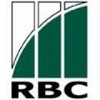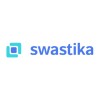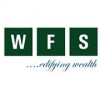Filter interviews by
Nomura Holdings Production Analyst Interview Questions and Answers
7 Interview questions
LIBOR and MIBOR are benchmark interest rates used in financial markets.
LIBOR stands for London Interbank Offered Rate and is the average interest rate at which major banks in London lend to each other.
MIBOR stands for Mumbai Interbank Offered Rate and is the interest rate at which banks in Mumbai lend to each other.
Both rates are used as benchmarks for various financial products such as loans, mortgages, and deriv...
A pivot table is a data summarization tool used in spreadsheet programs.
It allows users to group and summarize large amounts of data in a concise, tabular format.
Users can easily manipulate the data by dragging and dropping fields into different areas of the table.
Pivot tables are commonly used in data analysis and business intelligence to identify trends and patterns.
For example, a sales team might use a pivot ta...
Options are financial contracts that give the buyer the right, but not the obligation, to buy or sell an underlying asset at a predetermined price.
Call option: gives the buyer the right to buy an underlying asset at a predetermined price within a specified time period
Put option: gives the buyer the right to sell an underlying asset at a predetermined price within a specified time period
American option: can be exer...
VLOOKUP searches for a value in the first column of a table and returns a corresponding value in the same row. HLOOKUP does the same horizontally.
VLOOKUP: =VLOOKUP(lookup_value, table_array, col_index_num, [range_lookup])
HLOOKUP: =HLOOKUP(lookup_value, table_array, row_index_num, [range_lookup])
lookup_value: the value to search for in the first row or column of the table
table_array: the range of cells that contain...
Option swap is a financial derivative that involves exchanging one set of options for another.
Option swap is also known as a cross-option swap.
It involves two parties exchanging options on the same underlying asset.
The options being exchanged can have different strike prices, expiration dates, or other terms.
Option swaps are often used to manage risk or to take advantage of market conditions.
For example, an invest...
Option chain is a list of all available options for a particular stock or index, showing their strike prices and expiration dates.
Option chain helps traders to analyze and compare different options available for a stock or index.
It includes information such as the option's strike price, expiration date, and implied volatility.
Option chain can be used to identify potential trading opportunities and to manage risk.
F...
Futures and forwards are financial contracts that allow parties to buy or sell an asset at a predetermined price and date in the future.
Futures are standardized contracts traded on exchanges, while forwards are customized contracts traded over-the-counter.
Both futures and forwards are used for hedging or speculation.
Example: A farmer can use a futures contract to lock in a price for their crops before harvest.
Exam...
Nomura Holdings Production Analyst Interview Experiences
1 interview found
I applied via Campus Placement and was interviewed in Sep 2022. There were 3 interview rounds.

Logical reasoning, data interpretation, quant, English grammer, puzzle, some finance based questions like exdividend date record date etc , some formulas of excel
(10 Questions)
- Q1. 1) what are futures and fowards
- Ans.
Futures and forwards are financial contracts that allow parties to buy or sell an asset at a predetermined price and date in the future.
Futures are standardized contracts traded on exchanges, while forwards are customized contracts traded over-the-counter.
Both futures and forwards are used for hedging or speculation.
Example: A farmer can use a futures contract to lock in a price for their crops before harvest.
Example: ...
- Q2. 2) what are options and it's types
- Ans.
Options are financial contracts that give the buyer the right, but not the obligation, to buy or sell an underlying asset at a predetermined price.
Call option: gives the buyer the right to buy an underlying asset at a predetermined price within a specified time period
Put option: gives the buyer the right to sell an underlying asset at a predetermined price within a specified time period
American option: can be exercised...
- Q3. 3) what is pivot table
- Ans.
A pivot table is a data summarization tool used in spreadsheet programs.
It allows users to group and summarize large amounts of data in a concise, tabular format.
Users can easily manipulate the data by dragging and dropping fields into different areas of the table.
Pivot tables are commonly used in data analysis and business intelligence to identify trends and patterns.
For example, a sales team might use a pivot table t...
- Q4. 4) tell me about option chain
- Ans.
Option chain is a list of all available options for a particular stock or index, showing their strike prices and expiration dates.
Option chain helps traders to analyze and compare different options available for a stock or index.
It includes information such as the option's strike price, expiration date, and implied volatility.
Option chain can be used to identify potential trading opportunities and to manage risk.
For ex...
- Q5. 5) what is LIBOR and MIBOR
- Ans.
LIBOR and MIBOR are benchmark interest rates used in financial markets.
LIBOR stands for London Interbank Offered Rate and is the average interest rate at which major banks in London lend to each other.
MIBOR stands for Mumbai Interbank Offered Rate and is the interest rate at which banks in Mumbai lend to each other.
Both rates are used as benchmarks for various financial products such as loans, mortgages, and derivative...
- Q6. 6) what is credit default swaps
- Ans.
Credit default swaps are financial contracts that allow investors to protect themselves against the risk of default on a debt instrument.
Credit default swaps are essentially insurance policies on debt instruments.
They allow investors to transfer the risk of default to another party.
The buyer of a credit default swap pays a premium to the seller, who agrees to pay out in the event of a default.
Credit default swaps playe...
- Q7. 7) tell me about option swap
- Ans.
Option swap is a financial derivative that involves exchanging one set of options for another.
Option swap is also known as a cross-option swap.
It involves two parties exchanging options on the same underlying asset.
The options being exchanged can have different strike prices, expiration dates, or other terms.
Option swaps are often used to manage risk or to take advantage of market conditions.
For example, an investor mi...
- Q8. 8) formula of v-lookup and H-lookup
- Ans.
VLOOKUP searches for a value in the first column of a table and returns a corresponding value in the same row. HLOOKUP does the same horizontally.
VLOOKUP: =VLOOKUP(lookup_value, table_array, col_index_num, [range_lookup])
HLOOKUP: =HLOOKUP(lookup_value, table_array, row_index_num, [range_lookup])
lookup_value: the value to search for in the first row or column of the table
table_array: the range of cells that contains the...
- Q9. 9) do you have any questions
- Q10. 10) what job role are you looking for
- Ans.
I am looking for a job role as a Product Analyst.
I have a strong background in data analysis and product management.
I am skilled in conducting market research and identifying customer needs.
I have experience in analyzing product performance and making data-driven recommendations.
I am proficient in using analytical tools and software such as Excel, SQL, and Tableau.
I am a detail-oriented and strategic thinker, capable o...
Interview Preparation Tips
Skills evaluated in this interview
Top trending discussions






Interview questions from similar companies

Interview Preparation Tips
Experience: Resume was asked for in the beginning of the selection procedure.
Round: Technical Interview
Experience: In the interview they asked me HR and core field related questions. They asked me about myself and my family. They also asked me questions from my CV.
The questions from the core field were mainly from accounts. Topics covered were:-
1. Accrued incomes.
2. Outstanding incomes.
3. Golden rules and principles.
4. Quasi rent (from economics).
5. Questions from accounts/economics course material of college.
College Name: LADY SHRI RAM COLLEGE

Interview Preparation Tips
Experience: Candidates with CGPA greater than 7 were shortlisted.
Round: Interview
Experience: The interview was conducted in two rounds. Questions based on my resume and some finance questions were asked.
General Tips: In ascending order of importance, for getting shortlisted:
1) PoRs
2) Extra, co-curricular activities
3) Projects
4) Technical Skills example coding etc.
5) Academic Achievements
6) Internships
7) CGPA
College Name: IIT MADRAS

Interview Questionnaire
5 Questions
- Q1. What is beta, 0 beta, negative beta
- Ans.
Beta is a measure of a stock's volatility in relation to the market. 0 beta means the stock's price is not affected by market movements. Negative beta means the stock moves opposite to the market.
Beta measures a stock's volatility in relation to the market
A beta of 1 means the stock moves in line with the market
A beta of 0 means the stock's price is not affected by market movements
A negative beta means the stock moves ...
- Q2. How will you value a private comapny
- Ans.
Valuing a private company involves analyzing financial statements, market trends, and comparable transactions.
Analyze financial statements to determine revenue, expenses, and profitability
Consider market trends and industry outlook to assess growth potential
Research comparable transactions to determine valuation multiples
Apply discounted cash flow analysis to estimate future cash flows
Consider intangible assets such as...
- Q3. Case study to draw up financial statements from 3 transactions
- Ans.
Analyze three transactions to create financial statements, showcasing the impact on assets, liabilities, and equity.
Transaction 1: Company sells goods for $1,000 cash. Increases cash (asset) and revenue (equity).
Transaction 2: Company purchases equipment for $500 cash. Decreases cash (asset) and increases equipment (asset).
Transaction 3: Company pays $200 for rent. Decreases cash (asset) and increases rent expense (equ...
- Q4. About yourself
- Q5. Your motivations, weakness
- Ans.
My motivation is to constantly learn and improve. My weakness is that I can be too self-critical at times.
Motivated by a desire to learn and grow
Driven to constantly improve my skills and knowledge
Can be overly self-critical and need to work on self-compassion
Example: Motivated to take on new projects and challenges to expand my skillset
Example: Struggle with imposter syndrome and need to remind myself of my accomplish...
Interview Preparation Tips
Experience: They look for a CGPA of 7+
Round: Technical Interview
Experience: be confident with answers, be thorough with all the concepts
Tips: focus on valuation, practical application of the concepts
Round: HR Interview
Experience: Again be confident, communication skills
General Tips: Know about the valuation concepts in and out.
Skills: financial analysis, financial terms, ratios
College Name: IIT MADRAS

Interview Questionnaire
1 Question
- Q1. Basics in Finance (Accounting mostly)
Interview Preparation Tips
Skill Tips: "CFA level-1 preparation would help; clearing of level-1 exam would be even better!"
Skills: Finance Knowledge
College Name: IIT Madras

Interview Preparation Tips
Experience: Two rounds of personal interviewAlso includes a test but supposedly got cancelled last year.CGPA Criteria: 7.0 and above
Round: Interview
Experience: 1st round consisted of finance questions like accounting etc. and questions on stuff mentioned in resume e.g., projectsBe sure to be quizzed on financial skills mentioned in your resume
Tips: Investopedia can be very useful here.Accounting fundaes are needed and courses like Infrastructure finance will help.NCFM and CFA will surely help.
Round: Interview
Experience: 2nd round will be totally HR with questions related to your strengths, weaknesses and likings.
Tips: NCFM and CFA will surely help.
College Name: IIT Madras

Interview Preparation Tips
Experience: They considered those with CGPA over 7 and looked for students who cleared CFA-I.
Round: Interview
Experience: They asked finance related questions (mostly Accounting questions, and any other expertise in finance you might have mentioned). Also, questions based on the resume too (projects, etc).
Tips: Preparing accounting fundae is beneficial, other courses like Infrastructure Finance (core course in my case) would help. Prepare for NCFM and CFA-I. These will surely help.
Round: Interview
Experience: Typical HR questions like your interests, strengths, weakness, etc were asked.
Tips: Don’t prepare for typical HR questions, that’s a blunder. My advice would be to start thinking and writing answers for HR questions, and just mug up those.
General Tips: Good CGPA always helps. Find out your interests very early, and put extra effort into those. Practice math like CAT questions, etc (even if you are not preparing for MBA), many companies have those tests.
Skill Tips: Started my preparations in August. Starting earlier might have helped, especially in HR round. (Don't prepare for typical HR questions, that’s a blunder).
College Name: IIT MADRAS

I applied via Walk-in and was interviewed before Jun 2023. There was 1 interview round.
(1 Question)
- Q1. About cv and yourself

I applied via Campus Placement and was interviewed in Dec 2023. There was 1 interview round.
(3 Questions)
- Q1. What are the 3 financial Statement's?
- Ans.
The 3 financial statements are the income statement, balance sheet, and cash flow statement.
Income statement shows a company's revenues and expenses over a period of time.
Balance sheet provides a snapshot of a company's financial position at a specific point in time.
Cash flow statement shows how changes in balance sheet and income statement affect cash and cash equivalents.
- Q2. What are types of Depreciation?
- Ans.
Types of depreciation include straight-line, double declining balance, units of production, and sum-of-the-years-digits.
Straight-line depreciation: Allocates an equal amount of depreciation expense each year.
Double declining balance: Accelerates depreciation by applying a fixed rate to the book value of the asset.
Units of production: Depreciation is based on the actual usage or production of the asset.
Sum-of-the-years-...
- Q3. Explain Components of Balance sheet?
- Ans.
Balance sheet components include assets, liabilities, and equity.
Assets: Resources owned by the company such as cash, inventory, and property.
Liabilities: Debts and obligations owed by the company such as loans and accounts payable.
Equity: Represents the owner's stake in the company's assets after deducting liabilities.
Balance sheet equation: Assets = Liabilities + Equity.

(2 Questions)
- Q1. Tell me something about yourself
- Ans.
I am a dedicated and detail-oriented analyst with a strong background in data analysis and problem-solving.
I have a Bachelor's degree in Statistics and have completed multiple data analysis projects during my studies.
I am proficient in using statistical software such as R and Python for data analysis.
I have experience in conducting market research and creating reports to help businesses make informed decisions.
I am a q...
- Q2. Link between CF, P&L and BS
- Ans.
Cash flow, profit and loss, and balance sheet are interconnected financial statements that provide a comprehensive view of a company's financial health.
Cash flow statement shows how changes in balance sheet and income statement affect cash and cash equivalents.
Profit and loss statement shows the company's revenues, expenses, and profits over a specific period.
Balance sheet provides a snapshot of a company's financial p...
Interview Preparation Tips
Nomura Holdings Interview FAQs
Tell us how to improve this page.
Nomura Holdings Interviews By Designations
- Nomura Holdings Analyst Interview Questions
- Nomura Holdings Financial Analyst Interview Questions
- Nomura Holdings Intern Interview Questions
- Nomura Holdings Wholesale Strategy Analyst Interview Questions
- Nomura Holdings Global Structuring Analyst Interview Questions
- Nomura Holdings Lead Developer Interview Questions
- Nomura Holdings Senior Associate Interview Questions
- Nomura Holdings Senior Analyst Interview Questions
- Show more
Interview Questions for Popular Designations
Overall Interview Experience Rating
based on 1 interview experience
Difficulty level
Interview Questions from Similar Companies
|
Analyst
846
salaries
| ₹5.7 L/yr - ₹13.4 L/yr |
|
Senior Analyst
741
salaries
| ₹7.7 L/yr - ₹13.4 L/yr |
|
Associate
447
salaries
| ₹19.5 L/yr - ₹35 L/yr |
|
Assistant Manager
434
salaries
| ₹9.7 L/yr - ₹16 L/yr |
|
Vice President
216
salaries
| ₹38.9 L/yr - ₹64 L/yr |

MUTHOOT HOMEFIN (I) LTD.

Adarsh Credit Co-Operative Society

Debtcare Enterprises

MNC Group
- Home >
- Interviews >
- Nomura Holdings Interview Questions














